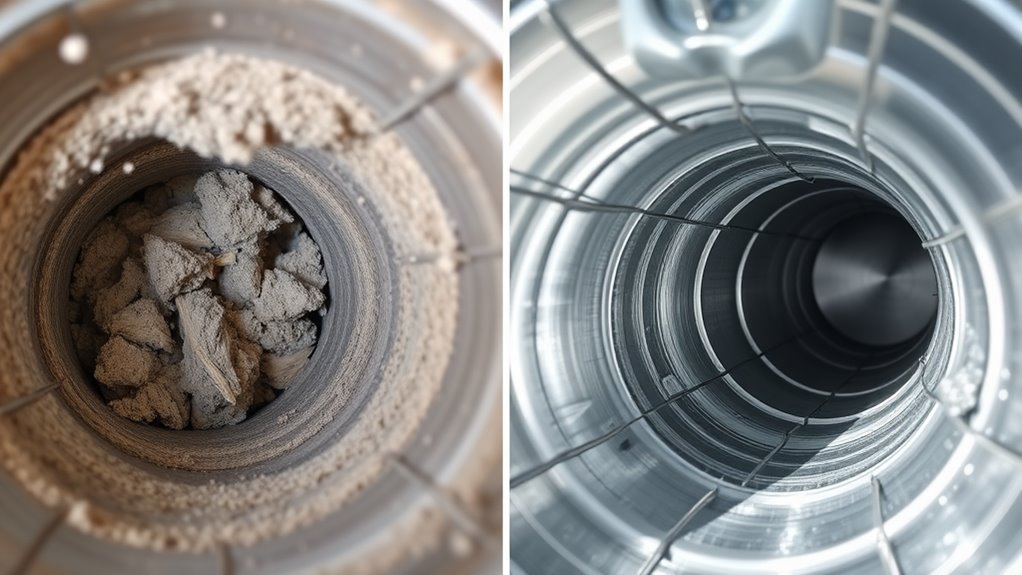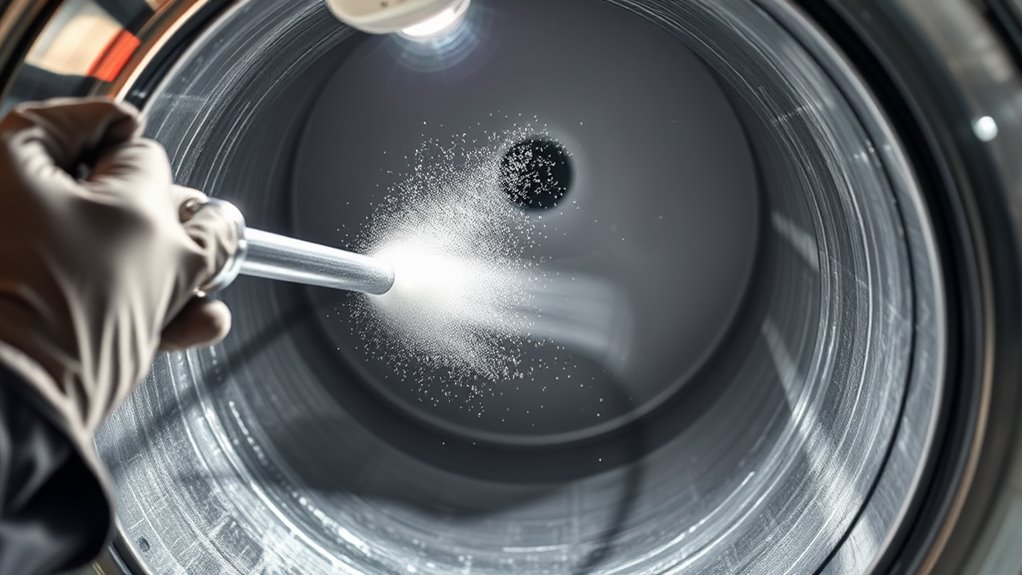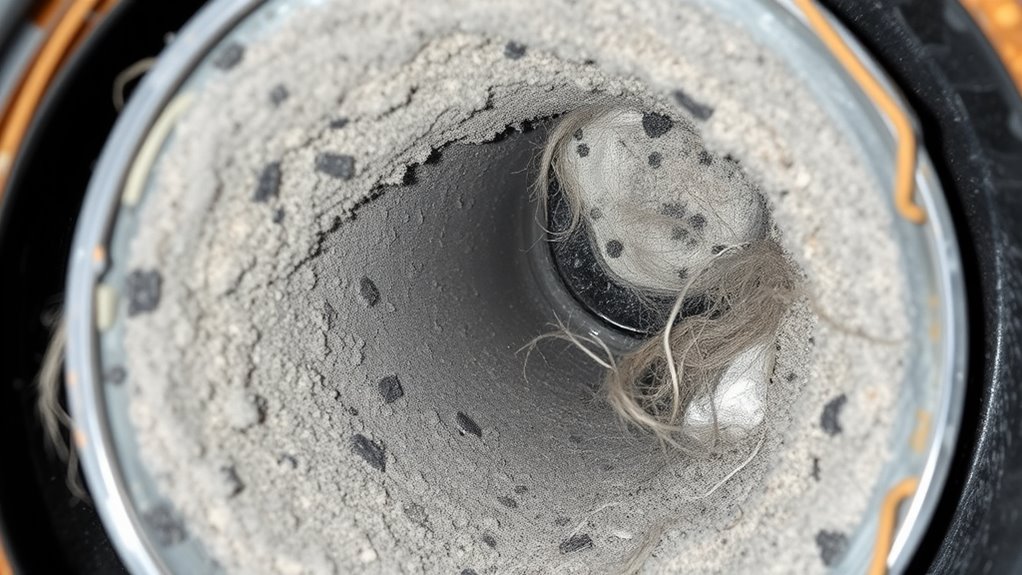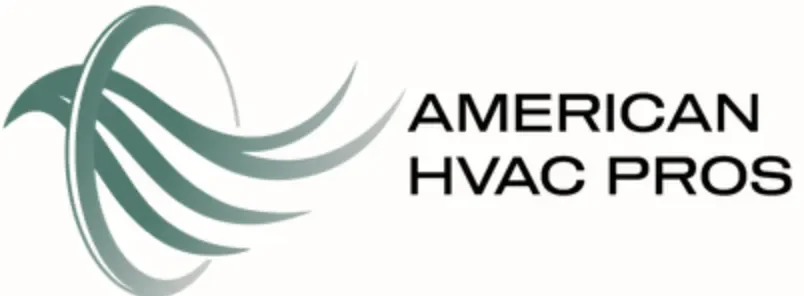Professional air duct and HVAC cleaning services improve your indoor air quality while optimizing system performance. You'll notice reduced energy bills, better airflow, and fewer respiratory issues when you remove accumulated dust, debris, and allergens from your ductwork. A thorough cleaning includes inspection, mechanical brushing, and sanitization, typically costing between $450-$1,000. Regular maintenance every 3-5 years, combined with proper filter changes, protects your investment and family's health. Uncover how this essential service transforms your home's environment.
Why Professional Air Duct Cleaning Matters

While many homeowners focus on visible home maintenance, professional air duct cleaning plays an essential role in maintaining indoor air quality and HVAC system efficiency.
Your home's air ducts accumulate dust, debris, allergens, and potential contaminants over time. When you run your heating or cooling system, these particles circulate throughout your living spaces, affecting your indoor air quality and potentially triggering respiratory issues. Professional cleaning removes these harmful elements from your ductwork.
You'll notice several benefits after a thorough duct cleaning. Your HVAC system won't have to work as hard to maintain desired temperatures, leading to improved energy efficiency and lower utility bills. Clean ducts also reduce the strain on your system's components, potentially extending their lifespan and preventing costly repairs.
Signs Your HVAC System Needs Cleaning
Recognizing when your HVAC system requires cleaning helps you maintain peak performance and indoor air quality. Your system's efficiency and your home's air quality can deteriorate gradually, making it essential to identify warning signs early.
Regular HVAC maintenance ensures optimal performance, preventing gradual decline in both system efficiency and indoor air quality.
- You'll notice visible dust accumulation around air vents, or dust particles floating in sunbeams, indicating compromised filtration
- Your energy bills have increased unexpectedly, suggesting reduced system efficiency due to dirty components
- You're experiencing uneven heating or cooling across different rooms, pointing to potential airflow restrictions
- There's a musty odor when your system runs, which often signals mold growth or debris buildup
If you observe any of these signs, it's time to schedule professional cleaning to restore your system's performance and protect your indoor environment.
The Complete Air Duct Cleaning Process

Before beginning any duct cleaning, you'll need a thorough pre-service inspection to assess your system's layout, identify problem areas, and determine the appropriate cleaning methods. Your HVAC technician will examine access points, evaluate component conditions, and document any pre-existing damage or specific concerns. This initial assessment sets the foundation for a systematic cleaning process that includes negative air pressure containment, mechanical agitation, and extensive debris removal.
Pre-Service System Inspection
Professional air duct cleaning begins with a thorough inspection of your HVAC system, which sets the foundation for an effective cleaning strategy. During the pre-inspection checklist and system assessment, technicians evaluate multiple components to determine the scope of work needed.
- Your technician will examine all access points, including supply and return vents, main trunk lines, and branch ducts to identify the best entry locations for cleaning equipment
- They'll document any visible damage, such as disconnected ducts, holes, or rust spots that require repair
- Using specialized cameras, they'll inspect the interior ductwork to assess contamination levels and identify potential blockages
- They'll verify your system's type, size, and configuration to select the appropriate cleaning tools and determine the required time for service completion
Step-By-Step Cleaning Breakdown
A detailed air duct cleaning process follows eight systematic steps that confirm thorough contamination removal from your HVAC system. While DIY cleaning isn't recommended for extensive results, understanding the professional process helps you evaluate service quality.
The process begins with system assessment, followed by creating access points in your ductwork. Technicians then connect negative air pressure equipment and perform mechanical brushing. After loosening debris, they'll vacuum the system using specialized equipment guidelines for proper suction strength. The fifth step involves cleaning all registers and grilles, followed by sanitizing the entire system. Next, they'll clean the HVAC unit's components, including coils and blower. Ultimately, they'll seal all access points and test the system's performance. Each step requires specific tools and expertise to confirm ideal results.
Health Benefits of Clean Air Ducts
Clean air ducts directly contribute to improved indoor air quality by reducing the circulation of airborne contaminants throughout your living space. When you maintain clean ducts, you'll experience significant improvements in respiratory health and general wellness.
Key health benefits of clean air ducts include:
- Reduced allergy and asthma symptoms due to decreased exposure to dust, pollen, and pet dander
- Lower risk of respiratory infections from elimination of mold spores and bacteria
- Better sleep quality from breathing cleaner, fresher air throughout the night
- Decreased exposure to household chemicals and volatile organic compounds (VOCs)
You'll notice these improvements immediately after professional duct cleaning, as your HVAC system will distribute purified air instead of recirculating contaminated particles throughout your home.
Common Air Duct Contaminants and Their Impact

Understanding the specific contaminants that accumulate in your air ducts helps explain why regular cleaning yields such significant health benefits. The most prevalent contaminants include mold growth, which thrives in the dark, humid environment of your ductwork, releasing harmful spores into your living space. You'll also find substantial dust accumulation, consisting of dead skin cells, pet dander, and microscopic debris that recirculates throughout your home.
Other common pollutants in your ducts include bacteria, volatile organic compounds (VOCs), and construction residue. These contaminants can trigger allergies, respiratory issues, and chronic health conditions. In commercial settings, you'll encounter supplementary concerns like paper dust, chemical residues, and industrial particles that pose unique risks to occupants' health and require specialized cleaning approaches.
Cost Considerations and Return on Investment
Professional air duct cleaning typically ranges from $450 to $1,000 per system, though costs vary based on your home's size, duct accessibility, and contamination level. A thorough cost analysis reveals that while the initial investment may seem significant, the long-term investment benefits often justify the expense.
Your return on investment includes:
- Reduced energy bills due to improved HVAC efficiency
- Extended equipment lifespan, minimizing replacement costs
- Lower maintenance expenses from decreased system strain
- Potential reduction in medical costs from improved indoor air quality
When evaluating the cost-benefit ratio, consider that clean ducts can reduce your HVAC system's energy consumption by up to 21%. You'll typically recoup your investment within 2-3 years through energy savings alone, making professional duct cleaning a sound financial decision.
Choosing the Right Air Duct Cleaning Service
Having evaluated the financial aspects of duct cleaning, your next step involves selecting a qualified service provider from the many options available. Begin by verifying the company's certifications through NADCA (National Air Duct Cleaners Association) and checking their service reputation through industry databases and local business bureaus.
You'll want to assess customer reviews across multiple platforms, focusing on feedback about technician expertise, thoroughness, and adherence to safety protocols. Request detailed written estimates from at least three providers, ensuring they include scope of work, equipment used, and time required. Compare their inspection methods – qualified companies will offer video documentation of both pre and post-cleaning conditions. Don't hesitate to inquire about their liability insurance coverage and workplace safety practices, as these factors directly impact service quality and your property's protection.
Maintenance Tips to Keep Your HVAC System Clean
Maintaining a proper filter replacement schedule of every 60-90 days keeps your HVAC system operating at peak efficiency and prevents excessive dust accumulation in your ductwork. You'll need to monitor your filter's condition more frequently if you have pets, live in a dusty area, or run your system constantly. While regular filter changes form the foundation of HVAC maintenance, scheduling professional deep cleaning services every 3-5 years removes built-up contaminants that basic filtration can't catch.
Regular Filter Replacement Schedule
Regular filter replacement serves as the cornerstone of effective HVAC maintenance, with specific timeframes varying based on your system type and environmental conditions. Understanding your filter maintenance needs and establishing a consistent replacement frequency will help optimize your system's performance.
Follow these guidelines to determine when you'll need to replace your filters:
- Basic fiberglass filters: Replace every 30 days, especially during peak cooling or heating seasons
- Pleated filters (medium efficiency): Change every 60-90 days, depending on household conditions
- High-efficiency filters: Replace every 6-12 months, but inspect monthly for visible debris
- Homes with pets, allergies, or high dust: Increase replacement frequency by 30-50% from standard recommendations
Monitor your filter's condition between scheduled changes, as factors like construction, seasonal changes, or increased occupancy may necessitate more frequent replacements.
Professional Deep Clean Benefits
While DIY maintenance keeps your HVAC system functioning day-to-day, professional deep cleaning delivers extensive benefits that extend beyond basic upkeep. You'll notice immediate improvements in energy efficiency and improved airflow throughout your home.
| Benefit | Impact |
|---|---|
| Air Quality | Removes trapped allergens, mold, and bacteria |
| System Life | Extends equipment longevity by 3-5 years |
| Performance | Increases heating/cooling effectiveness by 25% |
| Cost Savings | Reduces monthly energy bills by 15-30% |
| Home Value | Improves property marketability and worth |
Professional cleaning reaches areas you can't access, using specialized tools and industrial-grade equipment to thoroughly sanitize your system. Your HVAC components will operate at peak efficiency, reducing strain on motors and mechanical parts. This thorough service eliminates accumulated debris that restricts airflow and compromises indoor air quality.
Frequently Asked Questions
Can Air Duct Cleaning Damage My HVAC System or Ductwork?
When performed correctly, ductwork maintenance shouldn't damage your HVAC system. However, improper cleaning techniques can cause harm. You'll want to guarantee technicians use soft-bristled brushes and appropriate vacuum pressure to prevent denting or tearing your ducts. They should also protect your HVAC components during cleaning. If you hear unusual scraping or see visible damage during cleaning, you should immediately stop the process and address concerns with the technician.
How Long Does the Air Duct Cleaning Process Typically Take?
The cleaning duration typically ranges from 2-4 hours for an average-sized home, though it can extend to 6-8 hours for larger properties. Service efficiency depends on several factors: your home's size, duct system complexity, level of contamination, and accessibility of your ductwork. You'll notice technicians working systematically through each vent, moving from room to room. If you've got multiple HVAC systems, you'll need to allow extra time.
Should I Leave My Home During the Air Duct Cleaning Service?
While you don't have to leave your home during the service, it's recommended for your comfort and cleaning safety. The process creates temporary noise and may stir up debris, despite containment measures. If you stay, you'll need to avoid cleaned areas until completion. You can return to each room once it's cleaned and verified. For those with respiratory sensitivities or young children, it's best to step out temporarily.
Is Air Duct Cleaning Covered by Home Insurance Policies?
Most standard home insurance policies don't cover routine air duct cleaning as it's considered regular maintenance. However, you might receive insurance coverage if your ducts are damaged by covered perils like fire, water damage, or storms. Check your policy limitations carefully, as some insurers offer supplementary coverage options for HVAC systems. It's best to contact your insurance provider directly to understand your specific policy's terms regarding duct-related services.
How Often Should I Change My HVAC System's Filters After Cleaning?
You should follow a consistent filter maintenance schedule for ideal HVAC performance. Replace standard 1-inch filters every 60-90 days, but check them monthly. If you have pets, smoke indoors, or live in a dusty area, change filters every 30-60 days. High-efficiency filters (4-5 inches thick) can last 6-12 months. After a professional cleaning, stick to this same schedule, as your system will continue collecting new particles at a normal rate.

